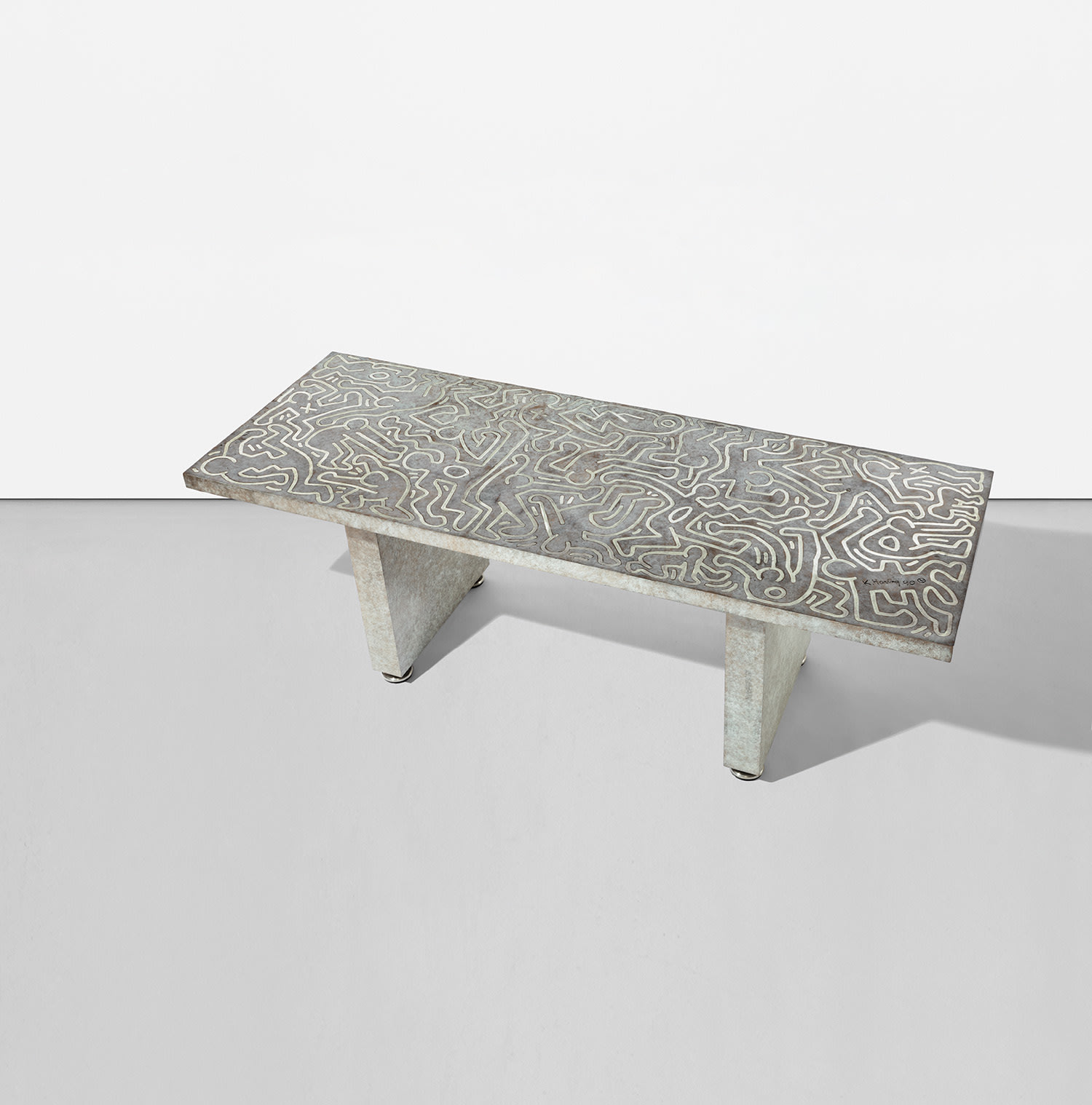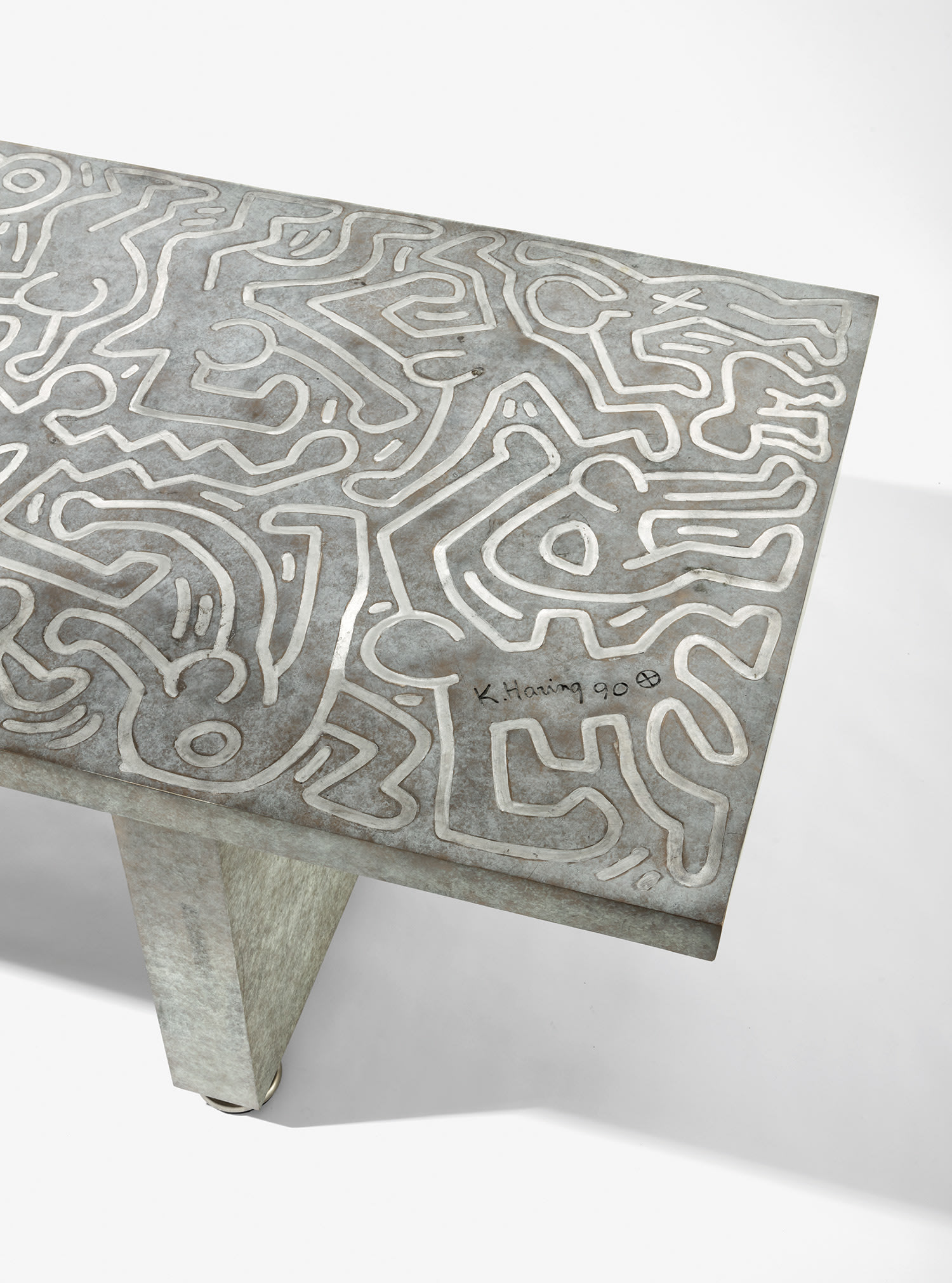





Property from the Collection of Samuel Havadtoy
156
Keith Haring
Writing Table
incised with the artist's signature and date "K. Haring 90 ⨁" lower right of the table surface; stamped with the number and the foundry mark "2/9" upper right of the table surface
bronze
29 x 83 3/8 x 31 1/8 in. (73.7 x 211.8 x 79.1 cm)
Executed in 1990, this work is a unique white patina variant numbered 2 from an edition of 9.
Further Details
Full-Cataloguing
Keith Haring
American | B. 1958 D. 1990Haring's art and life typified youthful exuberance and fearlessness. While seemingly playful and transparent, Haring dealt with weighty subjects such as death, sex and war, enabling subtle and multiple interpretations.
Throughout his tragically brief career, Haring refined a visual language of symbols, which he called icons, the origins of which began with his trademark linear style scrawled in white chalk on the black unused advertising spaces in subway stations. Haring developed and disseminated these icons far and wide, in his vibrant and dynamic style, from public murals and paintings to t-shirts and Swatch watches. His art bridged high and low, erasing the distinctions between rarefied art, political activism and popular culture.